Keep Your Chokes Open At All Times!
Bob St. Pierre at Pheasants Forever is one of the best writers in the bird world, and recently put up another interesting post, this one about the two things that have given him shooting confidence:
> A good dog.
> A skeet choke.
Let’s talk about the latter.
We’ll start with a couple Hosannahs.
Next, a quote from the Chokes section of Serious Grouse Hunting, Book 1: “Here’s our bottom line regarding chokes: Use the most-open chokes you can.”
We feel that holds true for any bird species, not just grouse. Remember that this whole IC/Mod “standard” for two-barrel guns started in an era when shells weren’t as good and didn’t pattern as tightly as they do now.
Bob writes: “While I always take factors like the type of cover and time of season into account, my go-to pattern is the skeet choke – with 92 percent of a shell’s pellets delivered into that 30-inch circle at 20 yards and 72 percent of those pellets in the circle at 30 yards.
“For ruffed grouse, it’s a no brainer to use a skeet choke or even the wider-patterning cylinder choke. While other skilled pheasant shooters may disagree, I personally have found the skeet choke to dramatically improve my success because the vast majority of my shots at roosters are coming within that 30-yard window.”
Bob is 100% right, though we’ll (especially Jay) go with as open chokes as we can. So we recommend going wide, and realizing that no matter what bird you’re hunting, your shots are usually well under 30 yards – even in more-open pheasant (vs. grouse) country, and even second shots.
Last but not least, just because you’re shooting faster-than-Superman loads, doesn’t mean you need a tighter choke – for those 60-yard shots…. Maybe you’re that good, but the rest of us mortals if anything need a “looser” choke because those loads are designed to pattern tighter.
A quick example: We tested some of Federal Premium’s Prairie Storm shells in Tennessee – those things are amazing. They definitely do what they’re designed to do, namely keep a tight pattern for longer shots. Can’t wait to use them on ringnecks this fall….
Such newer loads also let you pattern your gun using different shells rather than having to change chokes. We have no doubt that a Cyl, Sk or IC choke with Prairie Storms will wax many a bird out to 30 yards, even farther if you’re comfortable taking those shots.
Stop the Madness!
If you feel like the most macho dude on Earth by using a Mod choke or less of a man for not using one, don’t. As we said in Book 1, “If you must shoot full chokes in sporting clays, just remember that this is entirely different – we’re hunting for things we want to eat, not shooting things we want to disappear in a puff of smoke.”
In other words, don’t bring the sporting clays choke madness to the field. It’s apples and thornapples.
The book again: “In case you doubt you can hit a moving target at 30 or 40 yards with an open-choked 20ga (or even 28ga) – let alone a 12ga – take your gun or a friend’s gun out to a field or range, and have at it. If you’re on the bird, it’s no problem….”
But…
The bottom line with all shooting is if it works for you, don’t change it.
As we wrote, “If you have an older gun that has fixed chokes – like IC, Mod – if you can shoot it and have confidence in it, don’t change a thing.”
Category: Chokes, Pheasants Forever

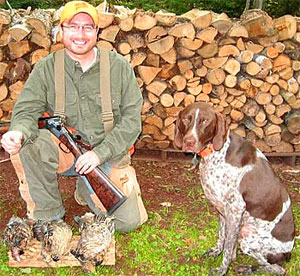





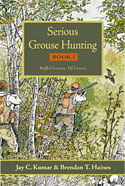







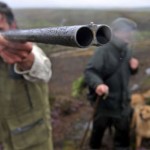
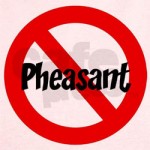

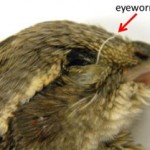

Preach it out Bob! DJ Dan here, 64 next week, 54 years hunting the big bird. I experimented for years with every load and choke and felt like i was alone in the wilderness. If EVERY serious pheasant hunter would try plated 5 shot in any makers Pheasant Load 1 1/4 oz. and CYLINDER bore they would find what i have…that they DO kill at 35 and 40 yards with 2-5 pellets that PENETRATE FAR enough and do enough damage to DROP THE ROOSTER LIKE A LIGHTNING BOLT. Just yesterday at my family farm in Brown City Mi. with my polychoke set to “slug” which is near cylinder i flushed a wild rooster at 30 yards, missed at 35, got my head down and at A MEASURED LATER long pace real world 39 yards and dropped the young rooster STONE DEAD IN THE AIR merciful like a rock no wing beat or flap legs broken 5 inch trail of blood from the nostril DEAD. SKEET OR CYLINDER. You’ll kill more roosters and have more fun. Can’t afford a polychoke, tubes or new gun? CUT OFF THE LAST TWO INCHES OF YOUR BARREL. Modern shells pattern VERY WELL without choke. Bob Brister said it. I’m saying it. EVERY 40-50 year experienced pheasant hunter i know has found it out. Choke is DEAD. Obsolete. Designed to make up for lousy shells of the 20’s thru 50’s. Plated #5’s, skeet choke. Drop em clean no runners. By the way pattern sheet testing on all 4 major shell brands shows CYLINDER AT 38 YARDS PUTS 5-8 pellets in the rooster’s vitals about 3 inches of penetration. Good luck! DJ Dan Burton MI
Dan, I can’t agree with you more. I’m right up there in age with you and find that my shots are way closer then I realized when I was younger and shot at everything with either full or mod. Many years ago I took the saw to a double that was mod. and full, finished off the end of the barrels like new and started loading my shells for each barrel. Close shot was a load of 2 3/4 6’s and the second barrel is a 3″ #4-6 mix. for Pheasant. Most hunters I see in the field have no clue how far 30-35 yards actually is and are letting off the 1st shot in less then 10 over a pointing dog and more times then not miss and connect with a second but mostly the 3rd after the bird has gotten out a bit. My double is a Stevens 20ga. I got back in the mid 60’s. Love that gun, shot many Grouse, Woodcock and Pheasant. Good hunting.
Bob, Ct.
I’m not entirely sold on the idea. I do agree that most hunters are over choked. I also agree that when hunting ruffed grouse a double choked skeet over skeet is the way to go. However hunting prairie sharptails or pheasants over a flushing dog with wide open chokes gives me pause. When I miss, I miss for reasons other than choke constriction. Opening day and maybe the day after an open choke on prairie and farmland birds works fairly well. As the season moves on I find that I tend to cripple birds using open chokes. More likely than not I’m just a little behind the bird and the wider pattern puts just enough pellets on the bird to cripple it. I adapt by tightening up with a light modified choke under modified choke finding it brings the birds down dead. If I’m centring my shots the birds will go down dead. If I’m behind, the bird wins and lives to fight another day. On pheasants I’m shooting fiocchi no. 5 in 1 oz loads through a 26″ barrelled citori o/u. For ruffed grouse I’ve taken to using Kent Fastlead in 7&1/2. For late November & December pheasant hunts I’ll make a further adaptation by switching to 1&1/4 oz loads through the same shell, gun/choke configuration.
Perhaps as important as the type of hunting is the ability of the shooter. I think both of you have nailed it. I cannot hit anything beyond 40 yards so I hunt with the skeet/skeet choke. Works well for me as the sky busting shots over 40 yards — mainly a waste of ammo.